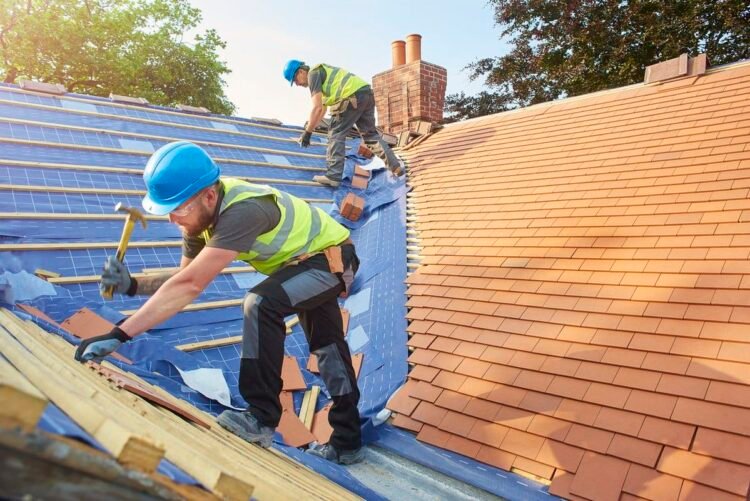Understanding Roofing Longevity
A roof is not just a first line of defense against the elements; it represents a significant investment in your home’s comfort, safety, and value. The durability and lifespan of a roof depend on a range of factors, including materials used, installation quality, climate, and, above all, regular maintenance. While conventional asphalt shingle roofs typically hold up for about 15 to 30 years, roofs crafted from metal, tile, or slate can often provide solid protection for half a century or more. Strategic care can play a crucial role in maximizing these figures, a principle echoed in many sectors of roofing, including commercial roof repairs St Louis County MO services.
Homeowners often overlook the long-term benefits of timely roof maintenance, as neglected issues can escalate into major problems. A structured maintenance regimen can prevent small issues from escalating, making it a cost-effective alternative to reactive interventions. Regular attention also helps homeowners anticipate upgrades or replacements, making planning and budgeting more manageable.
Routine Maintenance Checklist
Regular maintenance is the cornerstone of a durable roof. Establishing a schedule for cleaning, inspection, and minor repairs is both practical and empowering. Ideally, homeowners should make inspections a part of their routine at least twice a year or after major weather events. Start by removing sticks, leaves, and other debris from the rooftop and gutters, as blockages can quickly lead to water backup and ice dam formation, especially during the colder months. Water that cannot flow freely off your roof has the potential to slip under shingles, accelerate wear, and cause interior leaks.
These tasks, although simple, can have a profound impact on roof longevity and help prevent larger repairs. As highlighted in the Consumer Reports Roofing Buying Guide, diligent roof care not only helps to sidestep unexpected repairs but also maintains your home’s value and increases your sense of security as a homeowner.
The Role of Roofing Materials
The materials you choose for your roof play a foundational role in how well it weathers the years. Asphalt shingles remain the leading choice for many homeowners due to their affordability and straightforward repairs. However, they may require replacement every two decades or so. Metal roofing is quickly gaining attention for its durability, energy efficiency, and resistance to wind and fire. Homeowners willing to invest more upfront often find that metal roofs can last twice as long as their asphalt counterparts, with minimal risk of rot and virtually no shingle blow-off in windstorms.
Selecting the right material based on your climate, aesthetic goals, and budget yields a better-performing, longer-lasting roof.
DIY Inspection vs. Hiring Professionals
While homeowners can tackle several basic roof care tasks, there’s a fine line between what can (and should) be done alone and when to call in a specialist. Binocular inspections from the ground, debris clearing, and basic gutter cleaning can be managed by most. These routines keep you alert to visible issues and empower you to maintain your home more efficiently. However, complex problems such as soft spots, recurring leaks, or structural sagging require the experience and tools of a licensed roofing contractor.
Professionals are adept at recognizing warning signs invisible to the untrained eye, ensuring that repairs are both thorough and compliant with building codes. Professional assessments also provide written documentation, which can be invaluable for warranty purposes or when making insurance claims. A collaborative approach—where homeowners monitor and maintain, and professionals handle the serious tasks—provides comprehensive protection that benefits all homes, regardless of age or location.
Warning Signs: When to Take Action
Some roof dilemmas are clear at a glance, while others reveal themselves through more subtle, telltale signs. Swift action is essential—a leaky, damaged, or compromised roof can expose your household to water infiltration, resulting in thousands of dollars in repairs. Stay vigilant for missing, curled, or cracked shingles; signs of roof granules congregating in gutters; or any spots where daylight seeps into the attic.
If you observe any of these warnings, prompt repair or professional evaluation can help prevent more severe and costly consequences.
When to Invest in Upgrades or Replacement
Roofs nearing their expected lifespan or those that have experienced severe damage from storms or leaks may eventually require replacement. Asphalt roofs typically need to be replaced after 20-25 years, whereas clay, metal, or slate roofs can last for decades. Signs of this include excessive shingle loss, granulation in gutters, relentless leaks, or sagging. Modern roofing advancements offer better weather resistance, enhanced ventilation systems, and cool roof options. Upgrading at the right time provides peace of mind and can significantly increase a home’s value for the future.














